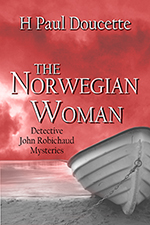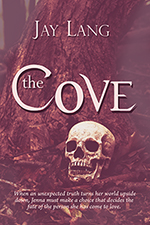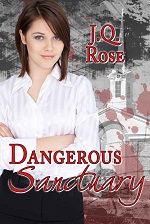Winter before last, on a cold, dark January morning, Jessie's daughter walked into the house to drop off her five-year-old daughter before going to work.
Kate jumped into Jessie's arms. "Why is there a car parked on the fire hydrant, grandma?"
"What?" Confused, Jessie stared back and forth between her granddaughter and daughter. "What car?"
"I'm surprised you didn't hear anything when it crashed, mom." Her daughter gestured for her to come outside, so Jessie donned a coat over her nightie and a pair of boots.The fire hydrant had been tossed into a snowbank some six feet away and a black SUV with tainted windows all around and the driver's door open had been abandoned on the corner of Jessie's driveway where the fire hydrant used to stand. The surreal scene in the twilight woke up Jessie more efficiently than the cup of coffee she hadn't had time to drink yet.
"I'm sure that car wasn't there at five-thirty when your dad left for work, or else he would have called the police." Jessie couldn't see anyone in the SUV, and couldn't smell gas, but she was still reluctant to approach the vehicle.
Her daughter called nine-nine-one. Within minutes, the police and the fire truck arrived. While the officers and firefighters assessed the situation--no one was dead or injured in the SUV--one of the firefighters gave little Kate a tour of the truck and a stuffed bear. For Kate, it was the start of a wonderful morning, but for her mom and grandma Jessie, that should have been the first clue that something was wrong with the neighbor who rented the house on the right--except the women assumed the driver had abandoned the vehicle because he was either drunk at 6 a.m. and didn't want to get a DUI or had stolen it.
From her house, Jessie couldn't see these neighbors because her double garage blocked her view, but when she went for a walk, she often noticed vehicles parked for a few minutes in front of the neighbor's house. Then as the weather got warmer, she noticed the neighbor's big dog in the yard. Every time she went outside, the dog would jump at the fence and bark and growled. The dog terrified little Kate who stopped wanting to play in Jessie's fenced yard.
Out of the blue, the owner of the house stopped by to talk to Jessie's husband. The woman had received an anonymous call saying something suspicious was going on in the house she rented to the man in his mid forties. "Do you think my renter might be running a prostitution ring?" she asked Jessie's husband. "Are you the one who sent me a message?"
"No, I didn't send any messages," answered Jessie's husband who had never met the owner until that moment, "but now that you mention it, I often see vehicles parked in front of the house , but the drivers always leave their cars running while they go inside, and they never stay more than five minutes, so I doubt that's prostitution, but something else may be going on."
Well, a few weeks later, Jessie decided to clean her shed which stood beside the fence separating her backyard from the suspicious renter's. At one point, she carried some junk out of the shed and froze in the doorway. Two RCMP officers were scouting the edge of her property for 'something'. They glanced at her, then resumed their search without saying a word. Somewhat rattled by the encounter, Jessie carried the junk into the big garbage can in her driveway, but as soon as she came within view of the street, she froze again.
There were police cars, unmarked cars, and a armored vehicle in the street in front of the house. Her suspicious neighbor's property was swarming with police officers, some in standard uniforms, some in tactical gear, and others in civilian clothes. They were carrying boxes out of the house, and processing the two vehicles in the driveway.
"Jessie?" The next door neighbor on the other side of Jessie's house, a single mom with four girls, ran toward her. "I was outside with the girls when the armored vehicle stopped in front of the house, followed by all the other vehicles. No sirens, no flashing lights. Officers in tactical gear just bolted out, busted the door open, and charged in. They arrested two or three people."
The drug bust didn't surprise Jessie, but she was disappointed she had missed all the action. To have seen the RCMP tactical unit in action would have been awesome.
~ * ~
While it might make a nice opening chapter for a novel one day, I can't take any credit for the story because it's not a story--it's my life in a nutshell.
I'm Jessie. I live in a quiet neighborhood, but for many months last year, I lived next to a renter who was sentenced to 10-15yrs in jail--twice--for drug and weapon related offenses, but for some reason, he was released after only a few years both times. Lots of cash money, drugs, and weapons were found during the raid, and as far as I know, he's still in jail awaiting his next trial.
After the raid, the owner renovated the house. There were bullet holes in the floor, and sewage backup after someone tried to flush the drugs. Half a dozen people were crashing in the house, many of them addicts. Some of them tried breaking into the house even after the owners got rid of everything. Me, I invested in heavy duty deadbolts in case they tried barging in the wrong house--namely mine.
The former drug house had been on sale since Christmas. Three weeks ago, it sold. The next day, one of the addicts who often crashed in the house contacted the owner. She had just come out of rehab, she was clean, she had turned her life around, and she wanted her stuff. The owner told her that the house was empty, so what did the woman who had allegedly turned her life around did a few hours later? She tried breaking in through the front window in broad daylight...no comments!
Yesterday, the new owners moved in. I haven't met them yet, but hopefully, peace and tranquility will return once more.
As you can see, writers live ordinary lives...or do they?
Happy Reading & Stay Safe
JS



















































